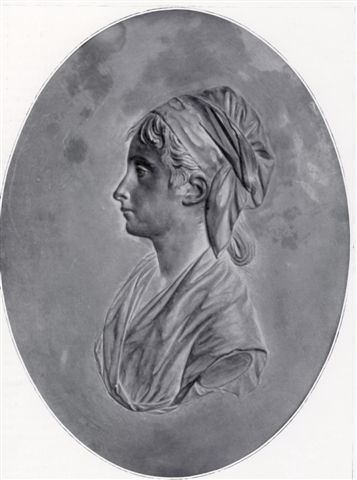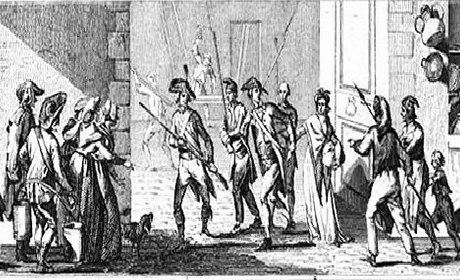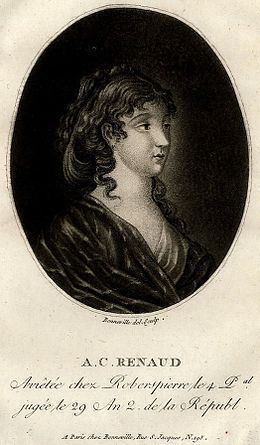Name Cecile Renault | ||
 | ||
Saga GALAXIE - Aparté #2 - La toile cosmique, avec Cécile Renault
Planck & Cécile
Assassination Attempt

Cécile-Aimée Renault (1774–1794) was a French woman and royalist accused of trying to assassinate Maximilien Robespierre during the Reign of Terror with two small knives. Born in 1774 in Paris, she was condemned for the attempt on Robespierre's life and guillotined on 2 June 1794 (29 prairial year II) in what is now Place de la Nation. Renault was the daughter of a paper maker in 18th century France and Robespierre's name was frequently printed upon his products and a frequent part of her early life.
Contents
- Saga GALAXIE Apart 2 La toile cosmique avec Ccile Renault
- Planck Ccile
- Assassination Attempt
- Trial and Execution
- References

Renault approached the home of Robespierre on the evening of 4 July 1794, carrying a parcel, a basket, and extra clothing under her arm that hid her weapons. She was able to successfully enter Robespierre's home due to her young countenance and age, being only seventeen years old at the time. Robespierre's guards initially allowed Renault to see him and but required her to wait for several hours inside the deputy's antechamber.

Upon waiting for several hours and becoming impatient, Renault demanded her hosts have Robespierre meet with her immediately, arguing that "a public man ought to receive at all times those who have occasion to approach him." When arrested she said she had been merely curious to see "what a tyrant looks like." She also claimed to her captors that she would "rather have one king than fifty thousand." Other sources vary in, some quoting that Renault "preferred to have one king that sixty."

Robespierre's guards searched Renault's clothing and basket and found the knives purposed to kill Robespierre, miscellaneous papers, and her fresh change of clothing. After placing her under arrest, Robespierre and his guards correlated this assassination attempt to recent attempts during Reign of Terror. This included most notably the assassination of Jean-Paul Marat by Charlotte Corday in 1793.
Renault's interrogators also suggested that her assassination plot was a retaliation effort. Her lover had recently been sentenced to death via guillotine by the Committee of Public Safety.
Trial and Execution
Renault was further interrogated and claimed that the extra clothing was for her stay in prison, expectant to be apprehended. Renault also insisted that "she never designed harm against any living being." She further claimed that she expected to be guillotined and wished to have a decent dress for the occasion. She was given rags to wear during her imprisonment. Renault, her family members, and other associates who knew her but were all unknowing of the assassination plot were given red shirts to wear as a mark of assassins and murderers. Robespierre included Renault's father, brother and aunt in her trial, noted as accomplices to the assassination attempt. All three were sentenced to death. There exists debate among historians if Renault carried any weapons with her or if this attempt was solely ill-fated fervor. Her admittance to being a royalist supporter is considered to support the existence of her hidden knives.
Renault's trial was overseen by Antoine Quentin Fouquier-Tinville, who was heckled by Renault regarding the charges and mocked the council conducting her trial. Renault was claimed to admit distress only briefly during her climb to the scaffold. She then smiled, and approached the scaffold gleefully when her at the guillotine turn arrived. The Execution of Cecile Renault and her family members and friends was seen by the Committee of Public Safety as a Royalist conspiracy.
